On President’s Day weekend, my Garden Memoirs class took on a 24-hour challenge to avoid ultra-processed foods. Ultra-processed foods often have several additives: sugars, salts, preservatives, artificial colors, artificial flavors, stabilizers. Food that has undergone any changes–cooking, pickling, freezing–has been processed. But the concern here is with ultra-processed foods. These foods are distorted well beyond their natural form.
What Does Ultra-Processed Mean?
Our class was thankful to have Merrimack College’s Nutrition and Human Performance Program Director and two grad students as guest speakers to explain some of the finer points of ultra-processed foods. One of the many helpful resources they shared is this NOVA Food Classification chart:
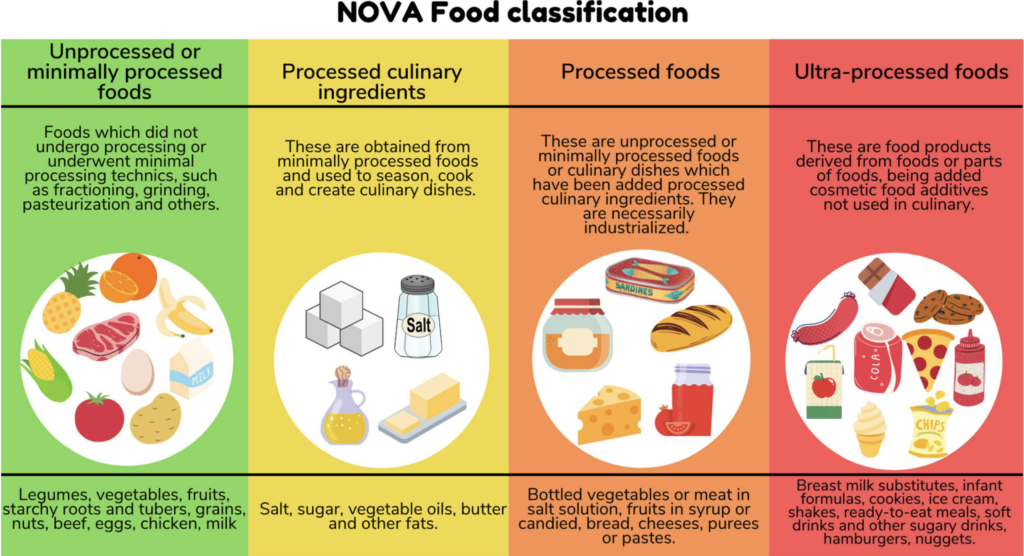
I knew that soda, donuts, frozen meals, chicken nuggets, candy, hot dogs, lunch meat, and other foods were off limits. But other things fell in a gray area when I thought about where to place them on the chart above.
To simplify the decision-making process for the 24-hour challenge, I did my best to follow these guidelines:
- Prioritize foods that look like the real thing (e.g., a frozen raspberry is obviously a raspberry, a roast chicken resembles a chicken).
- Don’t eat anything with an ingredient I can’t pronounce or don’t recognize as food.
In an interview with NPR, famed food writer Michael Pollan suggested, “Don’t eat anything that your great-grandmother wouldn’t recognize as food.” He cited the example of Go-Gurt as a befuddling food invention with a host of fake ingredients. Yogurt that…comes from a tube…and might taste like…cotton candy? None of that is natural.
Health Outcomes, Sustainability, and Food System Inequities
Before reporting on the results of my 24-hour challenge, I want to explain why limiting consumption of ultra-processed foods is a valuable lifestyle commitment.
Ultra-processed foods are known to be energy-dense (a high concentration of calories), low-cost, and nutrient-poor (Frontiers in Nutrition, 2019). Put differently, they’re a cheap way to take in a lot of calories and minimal nutrition. Consuming an abundance of ultra-processed foods has been linked to many negative health outcomes: dementia, heart disease, and various cancers.
These foods also have a poor environmental impact: according to a 2022 British Global Health article, ultra-processed foods hurt biodiversity, as well as create a lot of waste through their production and packaging.
The 24-hour no ultra-processed foods challenge was designed to promote more intentional food consumption. The last time I tried this challenge, students could not resist the siren song of Doritos. And that’s ok. We’re striving for mindfulness rather than perfection.
I completed my challenge on February 19th. Plotting out meals was relatively easy. Over the last 6 years, I’ve shifted my food closer. What I mean is that I’ve tried to make or produce more of my own food and source other things more locally. Household eggs come from our backyard chickens. I grow over 30 different vegetables, berries, and herbs in my yard. For the last 3 years we’ve signed up for a CSA meat share from a farm in southern New Hampshire. I also recognized that I was recycling a lot of plastic yogurt tubs, which is a waste of energy. So I bought a yogurt machine with little reusable glass bottles. It takes me about 25 minutes to prepare yogurt for an entire week of breakfasts.
These local and in-house food options are borne out of privilege. I have a reliable car and a good disposable income. I don’t live in a food desert or under conditions of food apartheid. When we think about the U.S. consuming nearly 60% of their calories from ultra-processed foods, we must also think about entrenched inequities in our food system.
Challenge Results
So how did the 24-hour challenge go? I was relatively successful at avoiding ultra-processed foods. However, I had 1 gaffe and 1 moment of weakness (in the form of Valentine’s Day chocolate).
Breakfast started out strong. I had homemade yogurt, frozen berries, and honey from my neighbor’s hive. Lunch was a backyard egg scramble with kale and homemade sourdough toast. Dinner was smoked chicken with mashed potatoes and cut veggies.
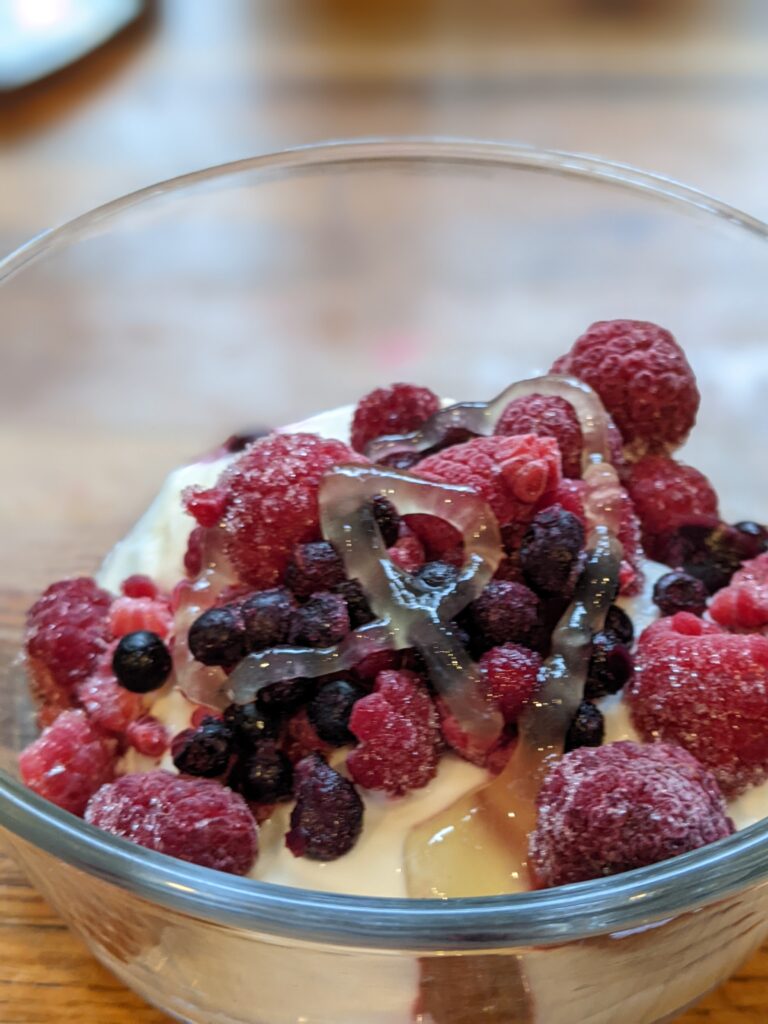
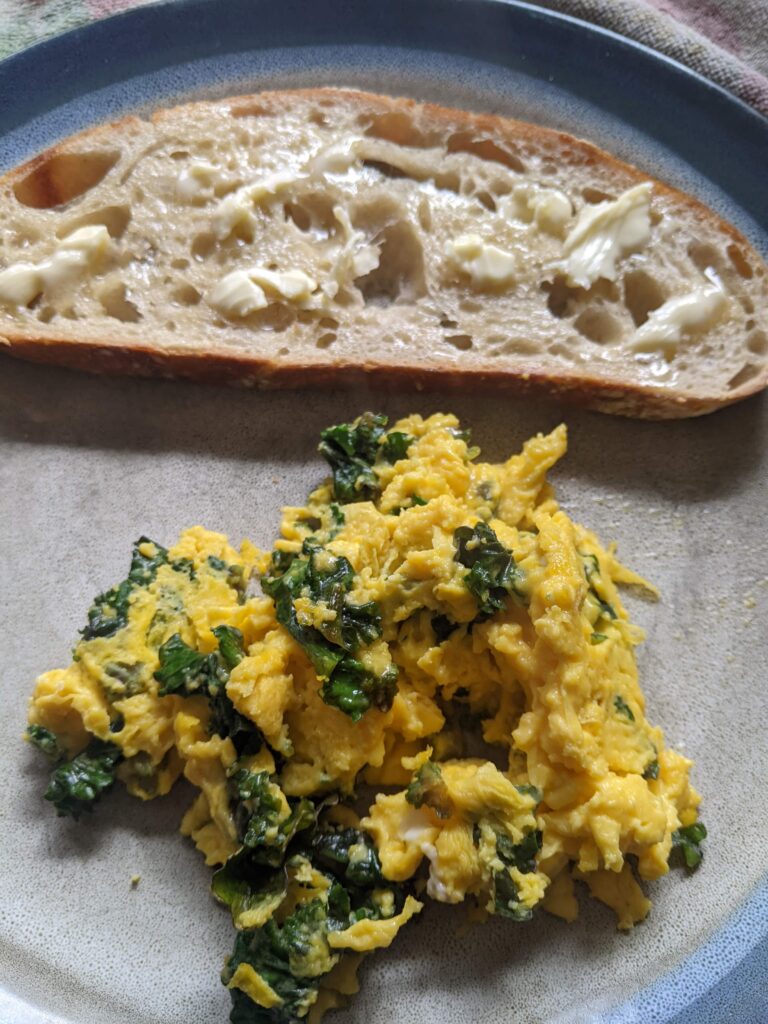
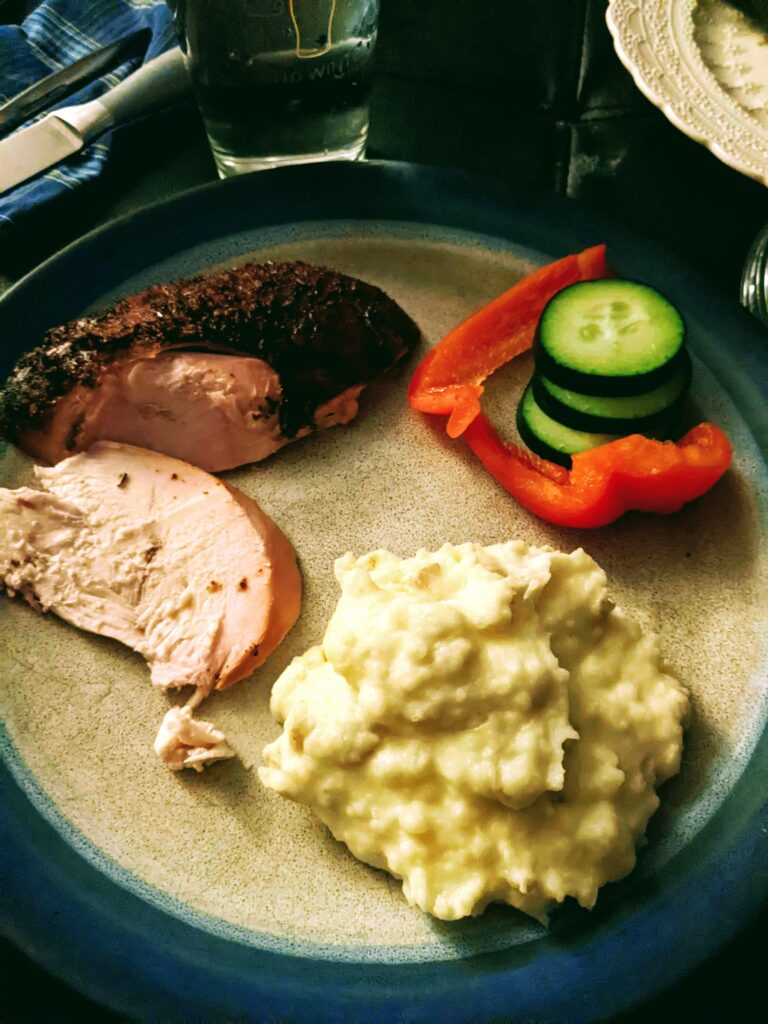
What surprised and challenged me most during the challenge was snacks. After having an orange and a carrot on Sunday, I didn’t know what was “safe” to snack on next. I checked out the bag of Tostitos chips. With a brief (and recognizable) ingredients list of corn, sunflower oil, and salt, I decided they were okay.
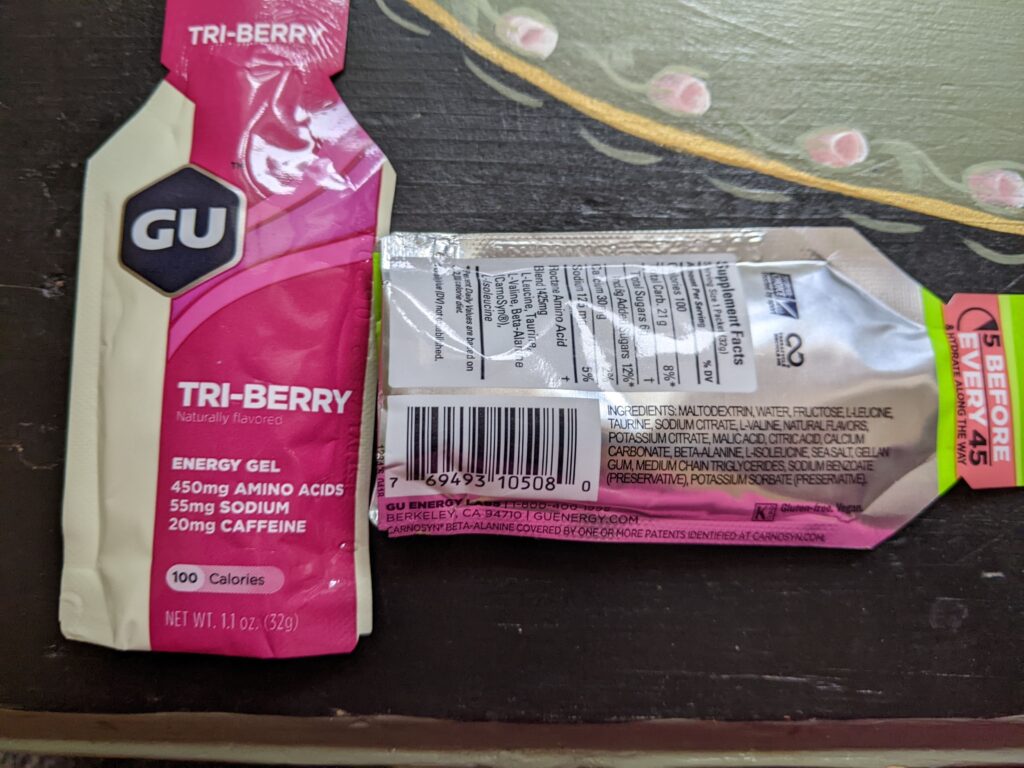
I already confessed the two Valentine’s Day chocolates above, but one ultra-processed food snuck up on me: GU. I did an 18 mile run on my challenge day and packed GU as endurance fuel. My brain didn’t even think of GU as “food” until I was already ingesting it at mile 6. It’s less like food and more like my inhaler or a pair of carbon-plated shoes: a scientific invention that enables me to run efficiently. And, wow! The GU ingredients list is a load of balderdash: taurine, l-valine, gellan gum, maltodextrin, l-leucine.
But let’s not focus on falling short and instead re-focus on making intentional food choices. This challenge nudged me to read more food labels, to focus on what real foods I could prepare. Now I’m thinking about healthier snacks, too. The string cheese I avoided actually has a recognizable ingredients list. String cheese can stay in the rotation. I also plan to clean and cut up more veggies to leave in the fridge so they’re as easy to grab as an Oreo or bowl of Doritos.
And the latest scheme: making Nutella! Thanks to some hybrid hazelnut bushes planted 5 years ago, I have hazelnuts. I also have cocoa powder, sugar, milk, and vanilla. If I make it myself, is this a health food? Not so much. But when I make it on my own, I’ll leave out unsustainable palm oils, emulsifiers, and half the sugar.
When considering altering your diet to reduce ultra-processed foods, strive to be more conscientious. And as with any health endeavors: don’t let perfect be the enemy of good.



Another thing I’ve really noticed is that for many people, low credit score is the reaction to circumstances further than their control. For instance they may be really saddled by having an illness so that they have substantial bills going to collections. It may be due to a employment loss or the inability to go to work. Sometimes breakup can really send the budget in the undesired direction. Thanks for sharing your ideas on this website.
Can you be more specific about the content of your article? After reading it, I still have some doubts. Hope you can help me.
I appreciate, cause I found just what I was looking for. You’ve ended my 4 day long hunt! God Bless you man. Have a great day. Bye
I do agree with all of the ideas you have presented in your post. They’re really convincing and will certainly work. Still, the posts are too short for novices. Could you please extend them a bit from next time? Thanks for the post.
I will right away grab your rss feed as I can’t in finding your e-mail subscription link or newsletter service. Do you have any? Please permit me realize so that I could subscribe. Thanks.
You made some first rate factors there. I regarded on the internet for the difficulty and located most people will go along with with your website.